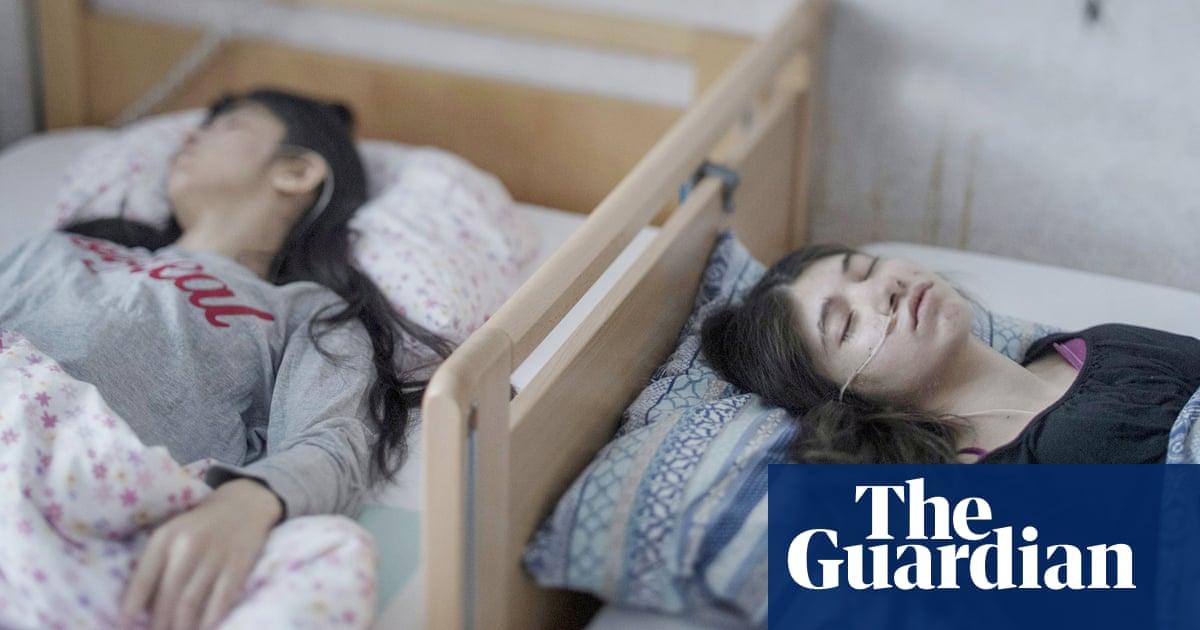I cannot resist a news headline that refers to a mystery illness and there is no shortage to keep me interested. “Mystery of 18 twitching teenagers in New York”; “Mysterious sleeping sickness spreads in Kazakhstani village”; “200 Colombian girls fall ill with a mysterious illness”; “The Mystery of the Havana Syndrome”. One medical disorder seems to attract this description more than any other: psychosomatic illness. That the body is the mouthpiece of the mind is evident in our posture, in the smiles on our faces, in the tremor of our nervous hands. But, still, when the body speaks too explicitly, when the power of the mind leads to physical disability, it can be hard to understand why. This perplexity is most apparent when psychosomatic disorders affect groups, spreading from person to person like a social virus, in a phenomenon often referred to as mass hysteria.
We are currently caught in a pandemic. We have been ordered to hide and to search our bodies for symptoms. If there was ever a time for a psychosomatic disorder to spread through anxiety and suggestion, this is it. The threat of a virus can affect health in more ways than one. Since 2018 I have been visiting communities affected by suspected contagions of psychosomatic illness. I have seen what fear can do to our physical health. I have also seen the curative effect of hope.
My journey started with a 10-year-old girl called Nola. She was lying in bed when we met, her eyes closed and her thick black hair spread out on her pillow like a halo. She looked very much as if she was asleep, except that she was unrousable. When her father tried to sit her up she was limp like a rag doll. In fact, Nola had not moved, she had not even opened her eyes, for 18 months. She was being kept alive by her parents who fed her a liquid diet through a tube. They kept her joints mobile with passive exercises and massaged her skin to keep her in physical contact with the world. Belying Nola’s deeply unresponsive state, scans and tests suggested her brain was awake.
Nola is one of hundreds of children who have fallen into a prolonged coma due to a newly coined medical condition called resignation syndrome. This is a disorder that causes an impenetrable comatose state, but where there is no disease to explain it. Medical test results are always normal. It appears in specific geographical locations: until very recently, people with this syndrome came exclusively from families seeking asylum in Sweden.

When I visited Nola I was hoping to get some insight into what was prolonging her coma, but I left her bedside feeling frustrated about the opaque way in which resignation syndrome was being discussed. The doctor who facilitated my visit was desperate for me to propose a brain mechanism to explain why children like Nola can’t wake up. Swedish scientists had invested considerable time in scans and blood tests to find an answer. The media, meanwhile, marvelled at the seeming impossibility of this “mystery illness”.
Resignation syndrome is certainly a highly unusual disorder – comas that are as deep and long-lasting as Nola’s, where testing implies the brain is healthy, are very rare. But does this illness really deserve all the headlines? After all, we know what causes it – and how to treat it. In the face of being deported from Sweden, children such as Nola withdraw from society, becoming increasingly apathetic, until they cease to interact with the world. They pull down their physiological shutters. The cure for resignation syndrome is to offer the child asylum.
It seemed to me that resignation syndrome was a social disorder masquerading as a medical one. When the children display their need through physical symptoms, and others conceptualise it through neurotransmitters and brain connections, their suffering is given some substance. Physical disability attracts more help than psychological or social distress. There are children seeking asylum all over the world but until they wash up on beaches, or become so overwhelmed that they withdraw into a coma, they are easy to neglect.
Having met Nola, it was clear to me that the Swedish children’s plight would not be solved by a neurologist or a brain scan. Resignation syndrome is a language of distress. It made me wonder about all the other mystery illness outbreaks and what they might be trying to say.
When, in 2011, a group of American schoolgirls began twitching uncontrollably, their neurologists diagnosed them with a psychosomatic disorder, but a celebrity-driven media frenzy cast doubt over that diagnosis and sent their community on a fruitless hunt for an environmental toxin. In 2016 two dozen American diplomats in Cuba were struck down by a constellation of neurological symptoms, including headaches, dizziness and unsteadiness. A diagnosis of mass hysteria was widely mooted but, likening psychosomatic illness to malingering, the diplomats’ doctors insisted their patients were not “pretending” to be ill. Despite the lack of evidence for it, the doctors attributed the outbreak to an attack by a sonic weapon.

“Mass hysteria” is an ambiguous term. It is used to describe any number of behaviours: excitement; rioting; stampedes; panic buying; mass shootings. As a medical disorder, under the name mass psychogenic illness (MPI), it refers to contagious symptoms that spread through a close-knit group of people, propagated by fear and anxiety.
The medical condition hysteria has had many incarnations. The name comes from the Greek word for womb. It was once thought to be found only in women, linked to childbirth and sexuality. In Freudian theory, hysteria became a psychological disorder caused by repressed trauma converted into physical symptoms. More recently, it has been presented as a biological problem, arising through the interplay between psychological mechanisms and physiological brain processes. With this latest formulation, people are starting to accept the reality of psychosomatic suffering. Although, many are still uncomfortable about talking openly about it.
The group phenomenon of mass hysteria is one of the most misrepresented disorders in medicine. It is inextricably linked to cliches and stereotypes, ogled at by the media and caricatured by art. All too often it is presented as a disorder found in emotionally overwrought girls. Books and films reduce it to a product of female sexual frustration. Allusion to witch-hunts, and references to Arthur Miller’s The Crucible, are never very far away. News reports liken modern outbreaks to centuries-old laughing and dancing epidemics, as if no time had passed. One newspaper headline referred to the twitching US schoolgirls as “The Witches of Le Roy”. I know of no other medical disorder that still carries the burden of 17th-century beliefs.
The way in which the condition is discussed isn’t much better among those with medical training. Many doctors still mistake hysteria for malingering, just as the diplomats’ doctors did. They assume that it is a condition of the fragile and the female, and as such reject the diagnosis for men. Many still use Freudian theories, often linked to sexual abuse, to explain it. Is it any wonder that groups affected by this disorder will go to great lengths to distance themselves from it?
By presenting MPI as faked illness, the doctors left the diplomats no choice but to look elsewhere for answers. The history of the US embassy in Cuba was fraught enough to make an attack believable. Politicians told embassy staff they were in danger and advised them to hide. In New York, where doctors made a firm diagnosis of a psychosomatic illness, the media took that to mean the girls were troubled and began picking over their social problems. As honours students and cheerleaders, the teenagers simply did not experience their lives as bleak. If mass hysteria was caused by unhappiness and stress, then the diagnosis couldn’t be right.
Once the psychosomatic explanation had been belittled and dismissed, both these communities were pushed into endless cycles of medical testing that led to repeated dead ends. The schoolgirls recovered, while five years on in Cuba, some are still looking for a sonic weapon. It makes you wonder, what suffering could have been prevented had the tropes associated with mass hysteria been cast aside.
Mass psychogenic illness is also called mass sociogenic illness. It seems a more fitting name because it suggests it is a social disorder, more than a psychological or biological one. Sometimes doctors are so busy looking inside people’s heads that they forget the social factors creating illness. Or, more likely even, they are afraid to look too closely at their patients’ social worlds for fear that they will be accused of blaming the person, their family or their community for the illness. So, they avoid the frank conversation. Which is how resignation syndrome ceased to be the product of a worldwide immigration crisis and became a “mystery”.
It is two years since I met Nola and I’m happy to report that she’s awake now. Her feeding tube has been removed. She can eat and even goes to school sometimes. But she can’t talk yet, so there’s progress to be made. Her family has been granted permission to stay in Sweden, at least for the foreseeable future. Her cure did not come from medical doctors or psychologists, it came by offering her hope of a safe future.
